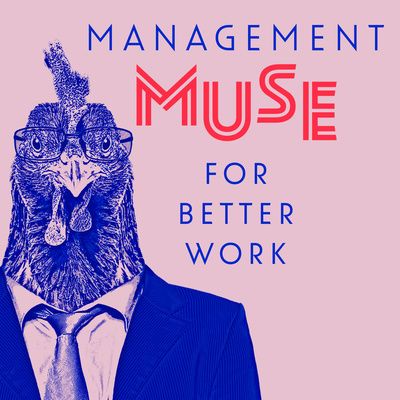S1 E12: Rhonda Mundhenk Tells Us to Run with The Wildebeest

Sign up for free
Listen to this episode and many more. Enjoy the best podcasts on Spreaker!
Download and listen anywhere
Download your favorite episodes and enjoy them, wherever you are! Sign up or log in now to access offline listening.
Description
Managers are often decent at waging bets, but what if you had to take over a losing hand? Management is hard on a good day, but leading an organizational turnaround...
show moreTimestamps:
[00:01:35] Tenacity is a common characteristic of many managers; however, turnarounds require an especially invested leader. Rhonda shares why this matters.
[00:02:59] Rhonda explains a 3-step process for turnarounds. 1) Preserving the core of the organization, 2) Redefining the organization, 3) Recasting the organization
[00:08:28] Restructuring relies heavily on committing to a new vision and endlessly communicating the vision to everyone involved. Here, we discuss how that's best done.
[00:12:41] Here, we talk about the traits necessary when turnaround work gets especially hard.
[00:16:12] Rhonda talks about the importance of your team, and accessing resources outside of your organization.
[00:16:55] Not every job survives a turnaround. Here’s how to keep your sanity during this tough phase.
[00:19:15] Rhonda reflects here on her top turnaround lessons learned
[00:24:55] Here is what the pandemic taught us all about navigating uncertainty, which is a common trait of turnarounds.
[00:29:02] Rhonda advises on how to influence change when you're not the CEO by: identifying your audience, communicating your why, overcoming inertia by appealing to emotions
[00:37:40] Rhonda discusses looking back and seeing your good work continue.
[00:43:10] What wildebeest migration and organizational restructuring have in common—the answer may surprise you.
Quotes by Rhonda Mundhenk:
“When you're in the moment, it just seems all consuming and there's so many things to do, but you also have to provide a vision for the future that's actually going to get people through [to] the other side.“
“You have to be able to understand your audience, understand what actually needs to happen, and then just write it to your audience in a way that [has] the emotional component. It's very rarely actually the rational things that make people change big, deep seated, you know, deeply felt beliefs.”
“You just have to have that understanding that like, yes, this is the whole herd that I am responsible for, but I do understand that not the entire herd is going to make it to where we're going, because that is not the nature of migrations. So, there will be some attrition along the way. But your goal is to get that critical mass of wildebeest to jump in the water. Because actually when they all jump in the water, very few of them are gonna be eaten by crocodiles.”
Resources:
McKinley, William, Scott Latham, and Michael Braun. "Organizational decline and innovation: Turnarounds and downward spirals." Academy of management review 39.1 (2014): 88-110.
Useem, Michael. Leading Up. New York: Currency, 2001.
www.managementmuse.com
https://culsure.com/product/organizational-benchmark/
https://ondemandleadership.com/strategic-planning/
Information
| Author | Rebecca Henley |
| Organization | Rebecca Henley |
| Website | managementmuse.com |
| Tags |
-
|
Copyright 2024 - Spreaker Inc. an iHeartMedia Company
